This time of year, no matter where I am, up north in deep snow, down on the coast in the rain or somewhere else when the sun comes out I want to either work a garden or explore in the woods. This year the spring weather has come extraordinarily early and since I have recently moved I have started explore new areas in the city. My first stop was to change my library card and to explore Colquitz River Trail which runs along the river of the same name. I was hunting for the not so elusive Osoberry or Indian Plum(Oemleria cerasiformis)plants which are in bloom now, I stalked along the walk and …..alongside the path were several!
On gloomy wet days when I go for a walk I see these shrubs with their glistening white racemes of pure white flowers which hang from the tips of branches like perfect dew drop earings. The Osoberry is a small tree or more commonly shrub which lives on the Pacific side of the coastal mountains, its range is from Santa Barbara County in U.S.A. north though into southern B.C. One of its common names refers to the fruit (fleshy drupes) which when ripe look like tiny thumb-sized Italian plums, and indeed they have stones which are also perfect miniatures of that fruit.
The fruit is ripe when it is bluish black and was eaten by local native groups, they savored them fresh, cooked and dried. Oso(berry) refers to bears liking to eat them. Birds (Robins), squirrels, deer, coyotes and many other animals love to feast on the fruit as well. Let us not forget the bees which enjoy this early source of nectar.

Indian Plums can be found in many parks here, this group is found by the bathrooms at Beacon Hill Park.
Native people also used parts of the Osmaronia cerasiformis medicinally. Burned twigs were pulverized, mixed with Oolican grease and applied to sores. A tea made from the bark was used as a purgative and tonic. Decotions where made for tuberculosis. It is said to be not only anesthetic but an aphrodisiac as well. Osoberry is a member of the Rosaceae(Rose family) whos seeds often have small amounts of hydrogen cyanide in them. hydrogen cyanide from these types of sources has been shown to stimulate respiration and improve digestion if carefully administered by a professional.
To my eye Osoberry are vase-shaped shrubs which are delicate looking throughout the year, this is partly do to the attractive thin leaves which keep their bright green coloring until the fall when they change to a clear butter yellow. It is not a densely leaved shrub therefore it never looks heavy or lumpy, but has a more wispy quality to it. In the winter without leaves the form of these shrubs can be highlighted.
Osoberry is seen in many areas here, along paths, roadsides, meadow edges and creeks and in many rocky areas growing under the Garry Oaks. They are in full sun or dappled light. They like rich humusy soils which can retain some moisture during our dry summers here. if they become too dry during the summer they will start to drop some of their leaves. They take pruning very well and this should be done after they have bloomed. They usually are pruned for shape but also can be cut to the ground to revive them and tidy them up.

Osoberry are male or female plants and often grow in thickets under Garry Oaks as seen here at Government House.
Indian Plum are male or female plants. If you want a good crop of berries for the wildlife or you, you will have to have both sexes of plants. I have seen incredible crops of berries and have made tasty syrups and jellies which are similar to cherry flavor. These plants grow to 6m(20ft) high and 3.7m wide in places where they are most happy. They are rated zones 7 though 10, cold tolerant to -18c(10f).
Help for hunting Indian Plums:
Rainyside has an interesting page: http://www.rainyside.com/features/plant_gallery/nativeplants/Oemleria_cerasiformis.html
Technical information on the berry: http://linnet.geog.ubc.ca/Atlas/Atlas.aspx?sciname=Oemleria%20cerasiformis
Paghats’ Indian Plum page: http://www.paghat.com/indianplum.html
Until we meet again later….



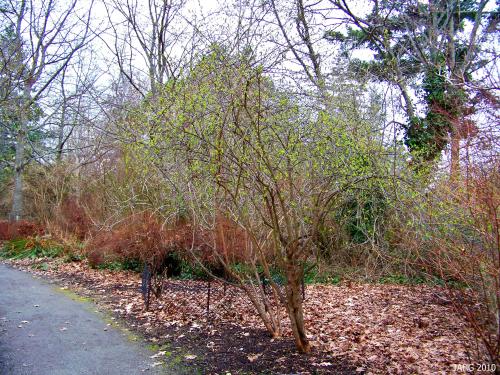








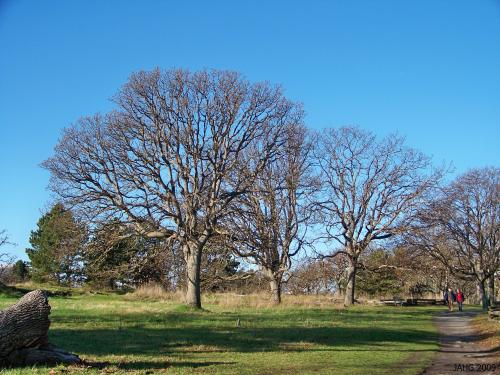
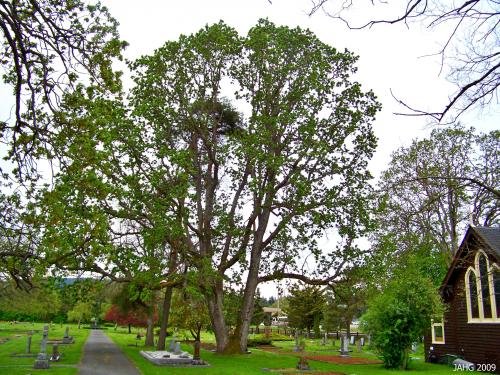























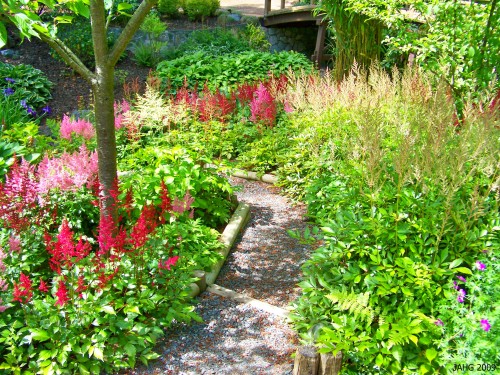













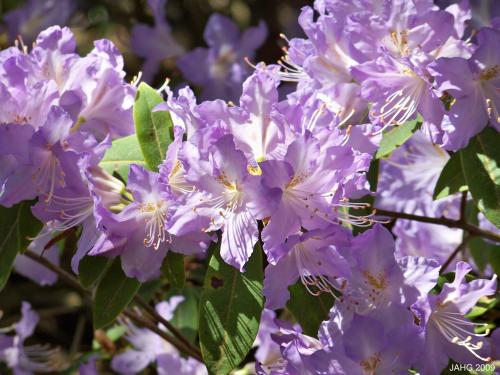



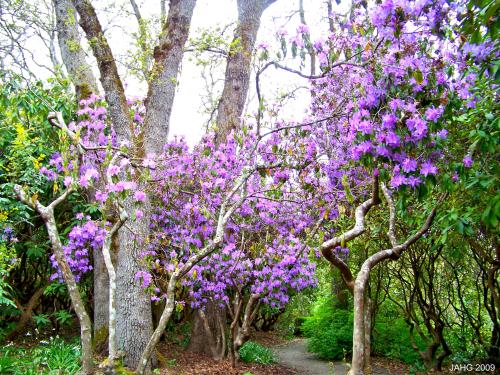







 Stumble It!
Stumble It!






